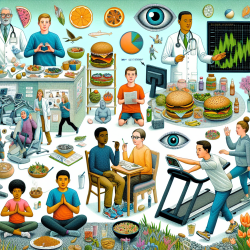Introduction to Sensory and Quasi-Sensory Experiences in Bereavement
Grief is a deeply personal journey, often accompanied by a range of sensory and quasi-sensory experiences of the deceased (SED). These experiences can manifest as auditory, visual, tactile, or olfactory sensations, or even as a general sense of presence. While such phenomena are sometimes dismissed as hallucinations, recent interdisciplinary research suggests that SED are common and often benign, occurring in 47% to 82% of bereaved individuals across various studies.
Key Findings from the Research
The research article titled "Sensory and Quasi-Sensory Experiences of the Deceased in Bereavement: An Interdisciplinary and Integrative Review" provides a comprehensive overview of SED. The study highlights that these experiences are not necessarily pathological but should be understood within their biographical, relational, and sociocultural contexts. The majority of SED are positive, providing comfort and a sense of connection to the deceased, although some may be distressing, especially if they continue a difficult relationship or are perceived as intrusive.
Implications for Practitioners
For practitioners working with bereaved individuals, understanding SED can enhance therapeutic outcomes. Here are some strategies to consider:
- Normalize the Experience: Educate clients about the prevalence of SED to reduce stigma and reassure them that these experiences are common and not indicative of mental illness.
- Explore the Meaning: Encourage clients to share their SED in detail, exploring the personal and cultural significance of these experiences.
- Facilitate Relationship Reprocessing: Use SED as a catalyst for working on the relationship with the deceased, helping clients develop a helpful continuing bond.
- Address Distress: In cases where SED are unwelcome or distressing, assess the circumstances and explore unfinished business with the deceased.
Encouraging Further Research
Despite the insights provided by the current research, there is a need for further studies to explore the nuances of SED. Future research could focus on cross-cultural comparisons, the impact of individual differences, and the development of validated measures for assessing SED. By advancing our understanding of these experiences, we can better support bereaved individuals in their healing journey.
To read the original research paper, please follow this link: Sensory and Quasi-Sensory Experiences of the Deceased in Bereavement: An Interdisciplinary and Integrative Review.










